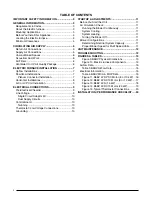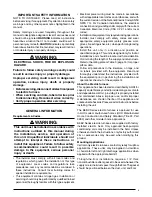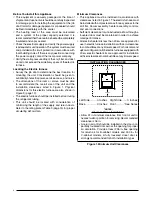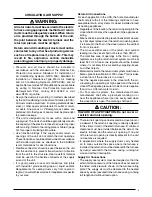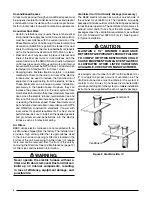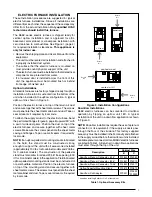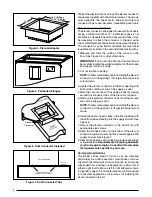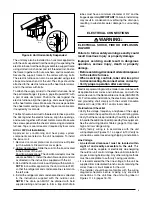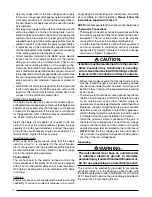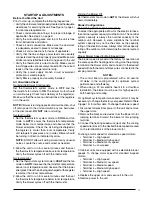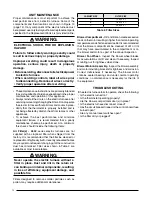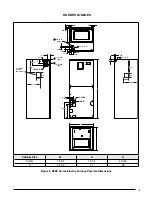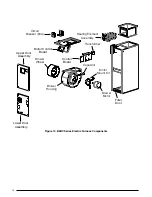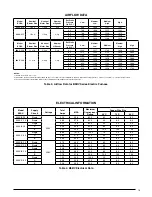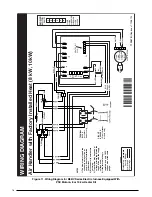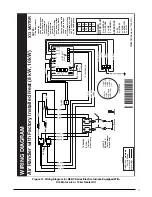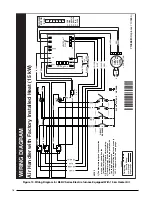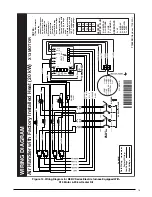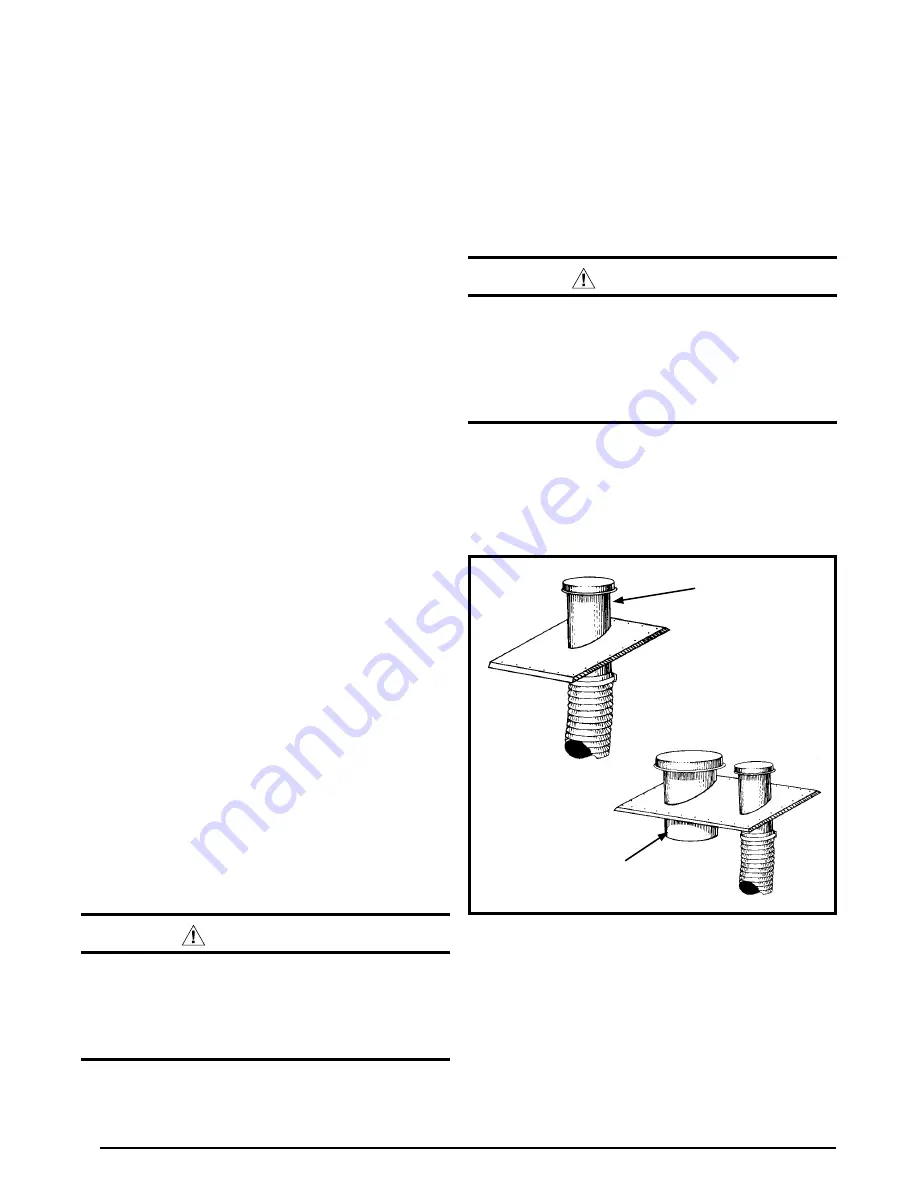
6
Unconditioned Spaces
All duct work passing through unconditioned space must
be properly insulated to minimize duct losses and prevent
condensation. Use insulation with an outer vapor barrier.
Refer to local codes for insulation material requirements.
Acoustical Duct Work
•
Certain installations may require the use of acoustical
lining inside the supply duct work. Acoustical insulation
must be in accordance with the current revision of the
Sheet Metal and Air Conditioning Contractors National
Association (SMACNA) application standard for duct
liners. Duct lining must be UL classified batts or blankets
with a fire hazard classification of FHC-25/50 or less.
• Fiber duct work may be used in place of internal duct
liners if the fiber duct work is in accordance with the
current revision of the SMACNA construction standard
on fibrous glass ducts. Fibrous duct work and internal
acoustical lining must be NFPA Class 1 air ducts when
tested per UL Standard 181 for Class 1 ducts.
•
Damping ducts, flexible vibration isolators, or pleated
media-style filters on the return air inlet of the electric
furnace may be used to reduce the transmission of
equipment noise eminating from the electric furnace.
These treatments can produce a quieter installation,
particularly in the heated space. However, they can
increase the pressure drop in the duct system. Care
must be taken to maintain the proper maximum pressure
rise across the electric furnace, temperature rise and
flow rate. This may mean increasing the duct size and/
or reducing the blower speed. These treatments must
be constructed and installed in accordance with NFPA
and SMACNA construction standards. Consult with
local codes for special requirements. For best sound
performance, be sure to install all the needed gaskets
and grommets around penetrations into the electric
furnace, such as for electrical wiring.
Air Filters
B5BV series electric furnaces are not supplied with an
air filter when shipped from the factory. The installer must
provide a high velocity filter that is appropriately sized
to the return air duct opening or filter rack located in the
bottom of the unit. Accessing the filter does not require
tools and can be removed from the front of the unit by
removing the filter door. See Unit Maintenance (page 12)
for filter sizes and installation information.
WARNING:
Never operate the electric furnace without a
filter or with doors removed. Dust and lint can
build up on internal components, resulting
in loss of efficiency, equipment damage, and
possible fire.
VentilAire III
VentilAire IV
Figure 2. VentilAire III & IV
Ventilaire III or IV Air Quality Package (Accessory)
The B5BV electric furnace has a cutout on each side of
the cabinet for ventialtion air. The Ventilaire air quality
packages introduce outdoor air into the living space during
furnace blower operation. The VentilAire IV also serves to
exhaust moist and/or hot air from the attic space. These
packages meet the ventilation requirements as outlined
in H.U.D. Standard Part 3280.103 (b) (2). See Figure 2
for typical installation.
CAUTION:
MAINTAIN 2 1/2” MINIMUM CLEARANCE
BETWEEN FLUE PIPE AND FLEX DUCT. FAILURE
TO COMPLY WITh ThIS RESTRICTION COULD
CAUSE EQUIPMENT DAMAGE. VENTILAIRE III
ILLUSTRATED OThER LISTED VARIATIONS
AVAILABLE. ChECK WITh MANUFACTURER.
Use adaptor (part number 914427) with Ventilaire III or
IV to supply the proper amount of ventilation air. The
VentilAire connections must be made for the system to
conform to H.U.D. rules. Do not leave disconnected after
servicing or adding A/C to the system. Complete installation
instructions are supplied with each air quality package.


